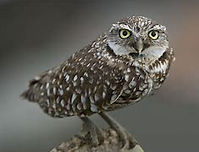
Bird of the Month by Neil Stalter
PRINCE CONSORT OR OMINOUS SIGN OF DEATH?
OWLS ARE KNOWN AS WISE … AND FEARLESS TIGERS
Old-timers along the Chesapeake still recite this ditty:
“A wise old owl sat on a log;
The more he saw, the less he spoke.
The less he spoke the more he knew.”
In rhyme and legend, the owl has been characterized as having superior brainpower and a lofty wisdom. A grouping of owls is even called a “parliament.” From earliest recorded history, this bird has enjoyed a high perch. The Greek goddess Athena is accompanied by her consort owl. In English literature from Beatrix Potter to The Owl and the Pussycat, owls have played a kindly role.
However, the bird with large eyes and swivel head has had detractors. They see evil in this night prowler with the eerie call. Even the little Screech Owl, in Shakespeare’s Henry VI, is called “the ominous and fearful owl of death.”
Owls have prevailed through the centuries with credit to their precision hunting skills. They wisely sleep by day when other birds of prey fill the skies. They hunt by night when the competition has eased. Most are carnivorous, with diets of rodents and small mammals along with a variety of insects. Their silent flight through wooded areas as well as open fields is a valued asset. For this, they can thank their serrated wing feathers that muffle the wind sounds.
Four individual owls, all year-round non-migrators, are common in central and south Florida:
-
Great Horned Owl – largest in North America and long-time residents of Grand Harbor. This fearless predator is one of the few animals that attacks even skunks and porcupines plus the usual field rodents. That has led to a nickname, “The Flying Tiger.” Has lived in the wild 27 years. The horns are tufted feathers with nothing to do with hearing. Can actually hear a mouse move under a foot of snow. Its call can’t be mistaken -- a loud and classic who-oo-oo call.
Eastern Screech Owl – tiny at 9-1/2 inches when compared to the Great Horned. Has been a regular in our Audubon birdboxes – at Harbor 12 and 16 and River 16. Many golfers have been surprised to see the bobbing head with tufted “ears” pop out of box openings. Voice is seldom the high screech alarm; rather it is soft, descending whinny much like a young horse. In Florida, its mottled color is mainly a russet brown
-
Burrowing Owl – also small at 9-1/2 inches. Mostly brown with white dots and long legs. Feeds on lizards, small mammals, insects and other birds. Lacks ear tufts like the Screech Owl, and has prominent yellow eyes. Takes over the underground holes of mammals as nesting spot. Spends most time on ground. Can be quite secretive, so a sighting is prized.
Barn Owl – gray owl with good size of 20-24 inches. Nests most often in tree cavities, and hunts by day as well as night. Prefers dense woods and sparse undergrowth, not seen in Grand Harbor. Diet relies on birds, reptiles and mammals – and one of few owls to take fish from ponds. Sounds a bit like a dog with its eight-note call, who-cooks-for-you-who-cooks-for-you.
Owls are monogamous at least for a season; some stay together until a mate dies. To spot an owl, especially by day, requires thorough searching up and down a tree. Just to make it tougher, the wise old owl will remain utterly silent.



